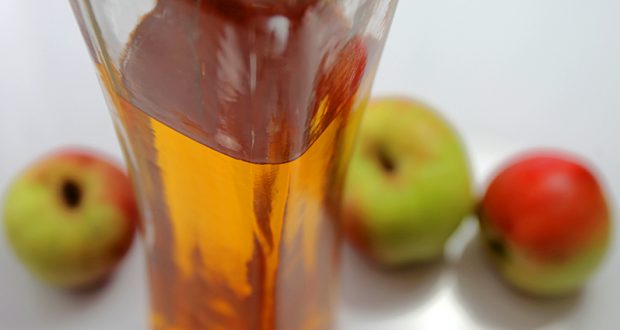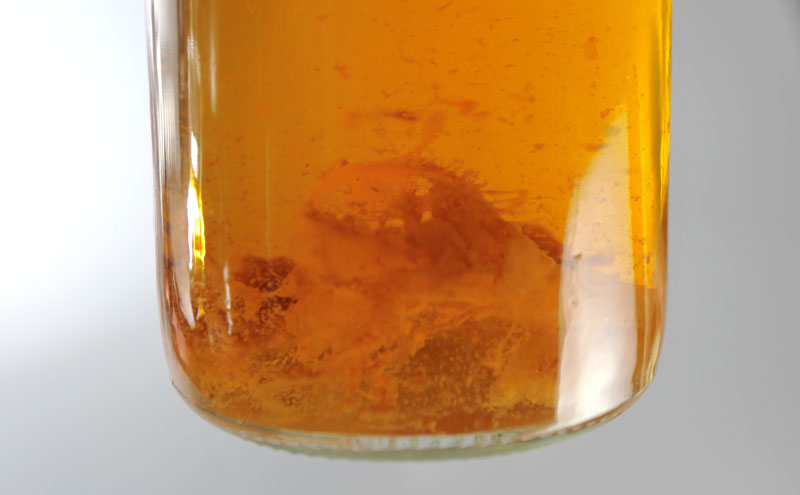The difference between industrial and domestic apple cider vinegar is so big that they are not even comparable. Domestic vinegar smells like apples and much more reminds to the apple juice.

Two problems can appear when you make homemade vinegar, time and space. Little more time is needed for fermentation, and the second problem is that you need to have adequate space (basement, shed …) for storage and aging of vinegar. Thats why maybe the best way is to make large quantities using more apples and larger containers.
If you still prefer buying vinegar, as there are different types, you should pay attention to the percentage of acid. The most commonly sold vinegar comes with 4% acetic acid, although you can find even with 6%.
Anyway lets get to business…
Best way is to use organic apples or wild ones which are not treated with any chemicals. You can also buy cheapest ones, size does not matter.
First, wash and clean apples. Be sure to throw out the seeds. Cleaned apples grind in a blender or machine for mincing meat or in another way. Put ground apples in a keg or glass jar (which depends on the quantity of apples). Mash apples well to release their juice. Tap the bottom of the glass bottles until they let the juice.
When you squashed apples, cover them with water in which you dissolve the sugar in the following way – half pound of sugar and at least 2 liters of water is needed for 11 pounds of milled apples .

If apples are sour or green put more sugar . If you pour more water, you will have more vinegar, but this is a more lenient solution – and this should not be your goal. Water is added because it is important that the apple does not stay on dry land, they have to swim in the liquid – in their juice. Leave at least 1/4 of your container empty .
Adding sugar is needed because of the fermentation process, and is used for the development of bacteria that will eventually make apple cider vinegar.
Fermentation of apples takes about ten days in a warm place – you can keep them on the terrace in the sun. In the beginning, when it starts boiling, the apples will be picked up on the surface. A sign that the fermentation is done is when apples fall to the bottom of the container (of course provided that you have poured enough water, as I have already mentioned). Therefore, those first ten days take it with a grain of salt because it may perhaps be shorter or longer depending on the heat. In other words: If it is warmer, the faster the fermentation process takes place and vice versa.
When it stops boiling, strain apple vinegar into a larger glass bulb. It is best to keep it in a dark place, such as basement.

Every ten days should strain vinegar to be cleared up, which means that it should be poured through gauze into another container. This is an ongoing process and should have patience and nerves as it is repeated several times. Also, it is quite normal on top of the bottles or containers in which you store vinegar to be formed a “mushroom”.
Vinegar is ready to use as soon as you strain it for the first time, but like wine, aging will get better taste and smell.




















